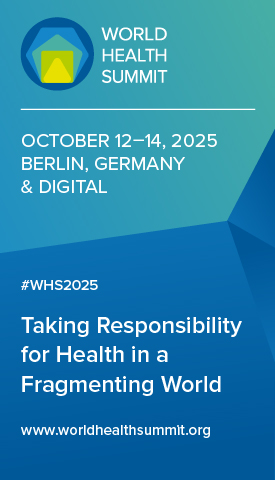The foundations of health
Accountability, accessibility and funding are the three pillars of primary health care, with investment in data systems for collaborative research and global sharing of data and technologies benefiting everyone, everywhere
Political decision-making on health is complex, especially for people living with HIV during the COVID-19 pandemic. Many countries face tough choices on where to invest resources for better health. Just like the AIDS pandemic during the early 2000s, the COVID-19 disease burden falls mainly on the most disadvantaged, with major impacts on health systems across high-, middle- and low-income countries. But although the focus is, rightly, on responding to the immediate threat of the pandemic, we must remember the more than 32 million AIDS-related deaths and 37.9 million people living with HIV.
Countries affected by COVID-19 can learn from their experiences with HIV. Techniques used for community contact tracing and index testing developed for the HIV epidemic can be applied to COVID-19 contacts. Systems developed for HIV can be used for keeping digital registries of COVID-19 patients. Lessons can also be learned in addressing stigma and discrimination against recovered COVID-19 people.
In 2017, about 50 like-minded organisations comprising UNAIDS co-sponsors, civil society networks, funding partners and 28 states formed the Global HIV Prevention Coalition. It sought to intensify progress on HIV prevention in countries with the highest numbers of new infections – recognising that, globally, primary HIV prevention lagged behind treatment, and no country was on track to meet its 2016 commitments to achieve a 75% reduction in annual new infections. Indeed, in 2018 the UNAIDS Global Report declared that HIV prevention was a crisis.
The Global HIV Prevention Coalition used digitalisation to identify four areas that limited prevention: political commitment, policy and law, financing, and implementation of effective interventions at scale. It developed a 10-point plan for country domestication and an HIV Prevention 2020 Road Map to nationally address these gaps. It also structured evidence-informed action for prevention into five pillars: adolescent girls and young women and their male partners, combination prevention services for key populations, condom programming, voluntary medical male circumcision and pre-exposure prophylaxis.
The coalition members, especially the health ministers, committed to implement the road map and to achieve the 2016 targets.
The coalition has accomplished a great deal within three years. Its global and country-level participants have reawakened attention to primary HIV prevention, and applied technical and political strategies honed over the past 15 years, including target-setting and regular reviews to focus HIV prevention resources on the interventions most likely to reduce new HIV infections. The methodology uses granular epidemiological data to map the populations and locations most in need, and offers an operational model in which the differentiated responses for those populations are unified as the most efficient strategy for achieving national HIV prevention targets. This has increased services for key populations and works with civil society organisations that have advocated for decades, often against political headwinds.
Improving the intervention mix
The coalition produces score cards that assist countries in improving their intervention mix and engaging more leaders and communities. The coalition has influenced major donors (including the Global Fund against HIV, Tuberculosis and Malaria, the Bill and Melinda Gates Foundation, and some bilateral donors) to acknowledge the importance of investing in primary HIV prevention.
Much more must be done: each of the 28 countries in the coalition faces diverse technical, political and financial challenges in rolling out combination prevention programmes. For most, the difficulty is altering the structural factors that impede effective HIV prevention programming, indicating gaps in political leadership and financing.
The recent review of the Global HIV Prevention Coalition concluded that the social and structural components of the five pillars merit more attention, and that the coalition’s activities have so far not increased the funding available for HIV prevention in most member countries.
Health is a political choice, so governments and leaders can best help by harnessing the power of political engagement and creating fully enabling legal and policy environments for prevention. Political solutions require accountability. First, leaders need to fulfill commitments on primary health care and ensure that “the highest attainable standard of health as a fundamental right of every human being” becomes a reality for all, especially vulnerable, neglected groups (such as men, women and girls, older adults, and Indigenous people), and remove all barriers so that everyone can access the health care that they need. Second, governments must invest in data systems and collaborate in research to ensure mandatory global sharing of all COVID-19 related data and technologies. Third, as part of financial accountability, the world needs a global COVID-19 fund into which all countries contribute a percentage of their gross domestic product. This fund would guarantee that money is not taken from one disease (such as HIV/AIDS) to treat another (namely COVID-19) and would guarantee that COVID-19 vaccines are provided free of charge to everyone, everywhere.
The unifying narrative of the Global HIV Prevention Coalition, focused on delivering the needed services to the populations and locations at highest risk, has “created a global standard for HIV prevention”. It has helped to overcome fragmentation and presents primary HIV prevention as essential to the long-term sustainability of HIV treatment. The coalition will continue to support countries to use digitalisation to refine and reach their national and subnational HIV prevention milestones and targets for 2030. This will include supporting country-level communications on primary HIV prevention activities to engage civil society, the private sector and other stakeholders to work collaboratively to reach that goal of zero new HIV infections.












